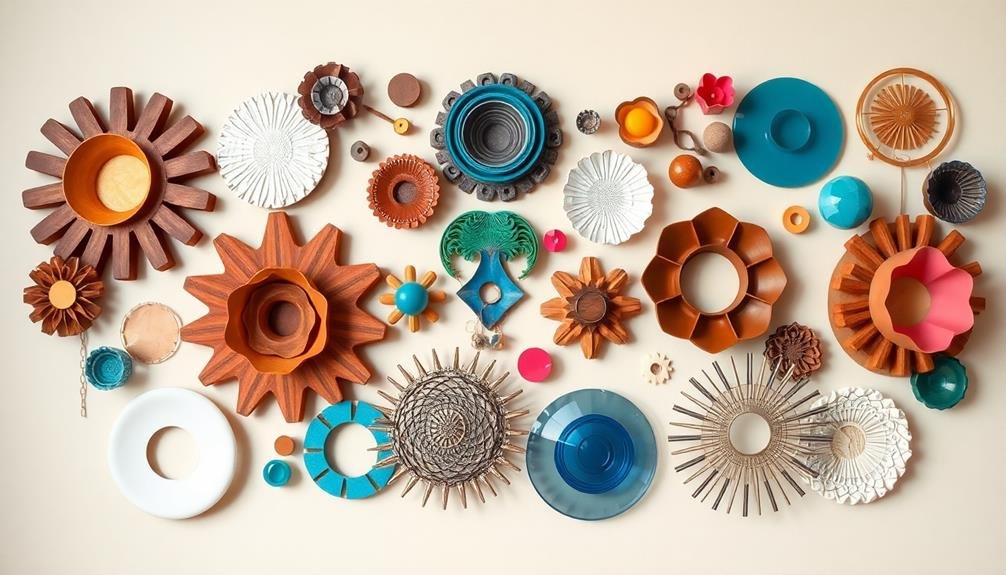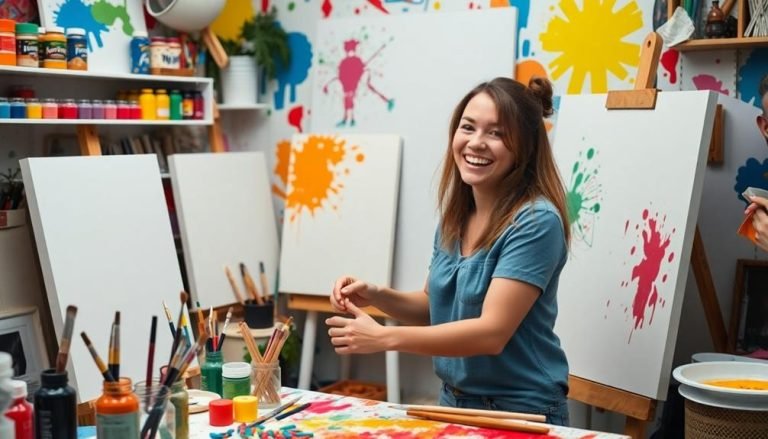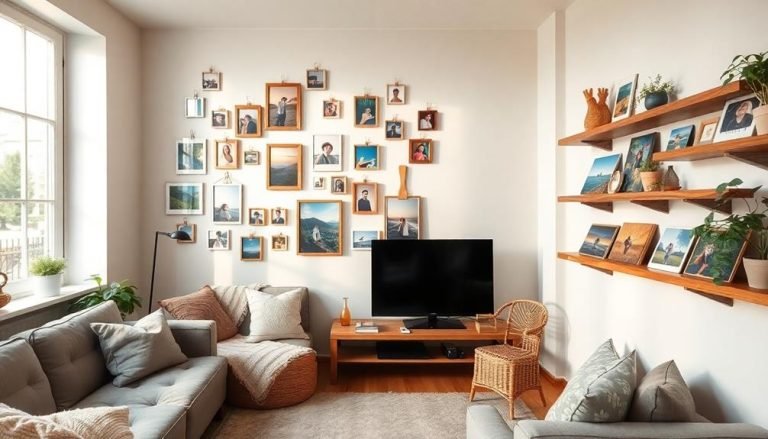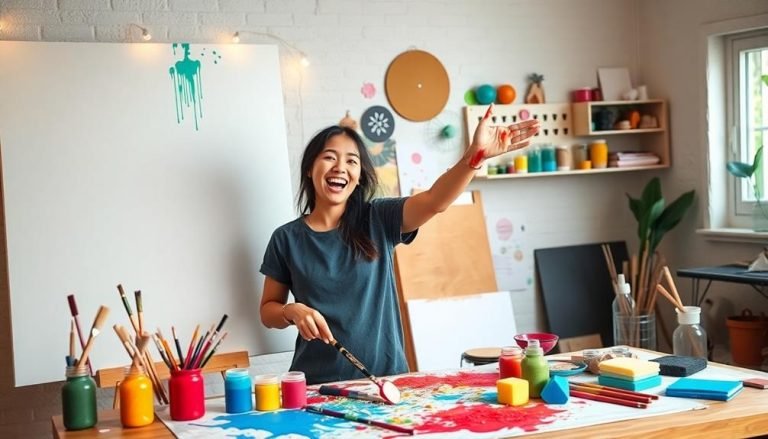You might not realize that everyday materials can transform your walls into enchanting 3D art pieces. By exploring options like cardboard, foam, or even recycled plastics, you can create stunning designs without breaking the bank. Each material offers unique benefits, allowing you to experiment with texture and depth. But what if you could combine these elements to craft something truly distinctive? Understanding the strengths and limitations of these materials could reveal new creative possibilities for your projects.
Key Elements
- Cardboard and paper allow for layered designs and transformations, making them ideal for creating depth in 3D wall art.
- Foam offers lightweight yet intricate shapes, perfect for adding dimension without excessive weight.
- Wood and pallets provide a rustic charm and can be personalized with stenciled quotes or initials for unique designs.
- Plastic and recycled materials encourage creativity and sustainability, transforming waste into compelling 3D art pieces.
- Metal and wire offer durability and an industrial aesthetic, enabling sculptural forms and mixed media opportunities.
Cardboard and Paper
When you're looking to create stunning 3D wall art, cardboard and paper are your best friends. These materials offer versatility and accessibility, allowing you to explore your creativity without breaking the bank.
Cardboard, often found in packaging, can be cut into various shapes and layered to add depth and dimension to your art. You might create geometric patterns, intricate floral designs, or even abstract forms that reflect your personal taste and style.
Paper, on the other hand, can be transformed into delicate sculptures, vibrant collages, or textured backgrounds. Consider using colored papers, patterned scrapbook sheets, or even pages from old books to achieve unique effects.
By combining these materials, you can enhance visual interest while experimenting with different techniques like quilling or origami.
To make your 3D wall art truly stand out, remember to play with shadows and lighting; this can dramatically impact the overall appearance. Incorporating elements like paint or embellishments can further personalize your piece.
Foam and Fabric
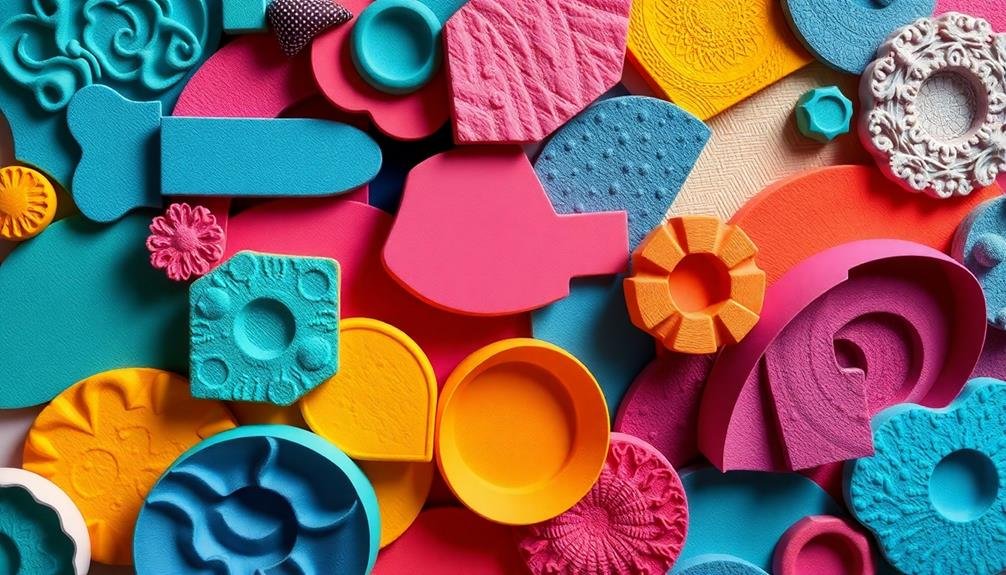
If you're ready to take your 3D wall art to the next level, consider incorporating foam and fabric into your projects. Foam, available in various thicknesses and densities, offers an excellent base for creating dimension without excessive weight. You can easily cut foam into intricate shapes, layering them for a striking effect.
For instance, using a combination of lightweight foam sheets and dimensional foam squares, you can achieve a visually enchanting piece that stands out on your wall.
Fabric adds texture and warmth to your designs, allowing you to infuse color and pattern in ways that paint alone cannot. By covering foam shapes with fabric, you create unique surfaces that invite touch and admiration.
Consider using burlap for a rustic look, or vibrant cottons for a playful feel. You can even add embellishments like lace or sequins for a touch of elegance.
Combining foam and fabric not only enhances the aesthetic appeal of your wall art but also fosters a sense of community as you share your creations with others, inviting them into the narrative you've woven through your artistic expression.
Wood and Pallets
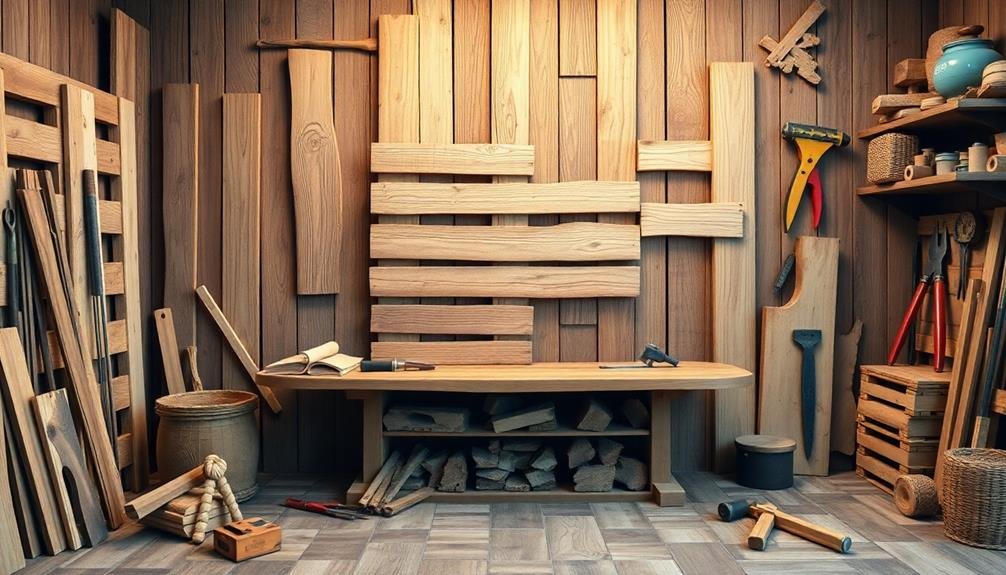
Wood and pallets offer a rustic charm that can transform your 3D wall art into a statement piece. By utilizing reclaimed wood, you not only embrace a sustainable approach but also infuse your space with character and warmth, inviting a sense of belonging.
You can create layered designs or geometric shapes by cutting pallets into various sizes, allowing you to play with depth and texture. Consider incorporating stenciled quotes or family initials, which can personalize your artwork and make it uniquely yours.
The natural imperfections and weathered finishes of wood evoke a feeling of nostalgia, connecting you to a more traditional aesthetic that resonates with many.
To enhance your design, you might explore different stains or paints that complement your decor, ensuring that your 3D wall art harmonizes with the rest of your living space. Moreover, combining wood with other materials, such as metal or fabric, can create striking contrasts that elevate your artwork.
Ultimately, working with wood and pallets not only allows you to express creativity but also cultivates an inviting atmosphere, making your home a true reflection of your personal style and shared experiences.
Plastic and Recycled Materials
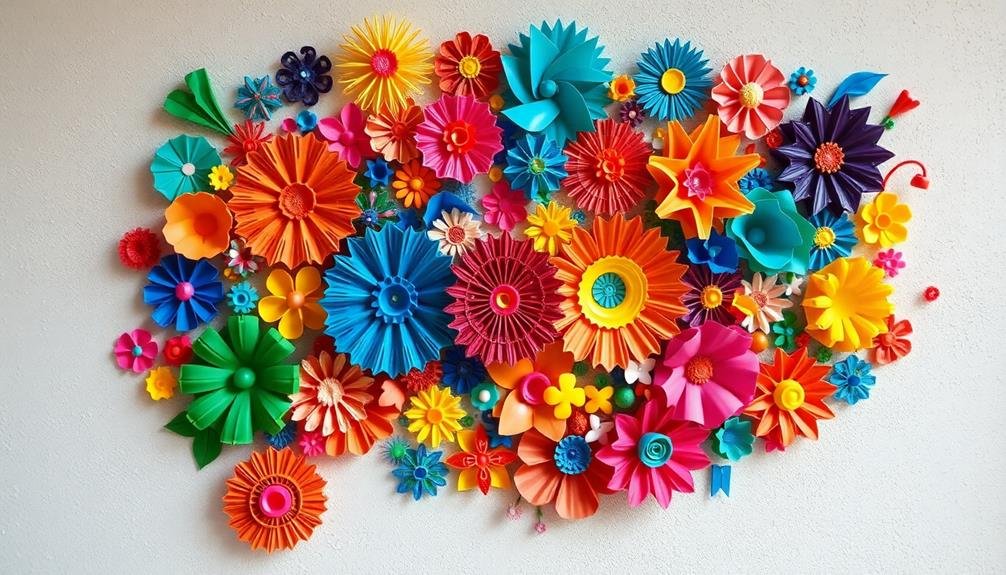
Creativity thrives when you explore the vibrant potential of plastic and recycled materials for your 3D wall art. Utilizing items like discarded bottle caps, plastic containers, and even old CDs can transform everyday waste into stunning visual statements. These materials allow you to experiment with textures, colors, and shapes, adding depth to your pieces while promoting sustainability.
Reflect on crafting a wall hanging from plastic straws; by cutting and arranging them into geometric patterns, you can create a striking, modern aesthetic that sparks conversation.
Alternatively, using recycled cardboard can provide structure and rigidity, enabling you to develop layered designs that play with light and shadow.
Incorporating these materials not only showcases your artistic flair but also resonates with a community increasingly focused on environmental responsibility. As you embrace this creative journey, you'll find that your work can inspire others to reflect on the beauty hidden within what they might typically discard.
With a little imagination, you can turn plastic and recycled materials into meaningful art that reflects your values and connects you to others who share your passion for creativity and sustainability.
Metal and Wire
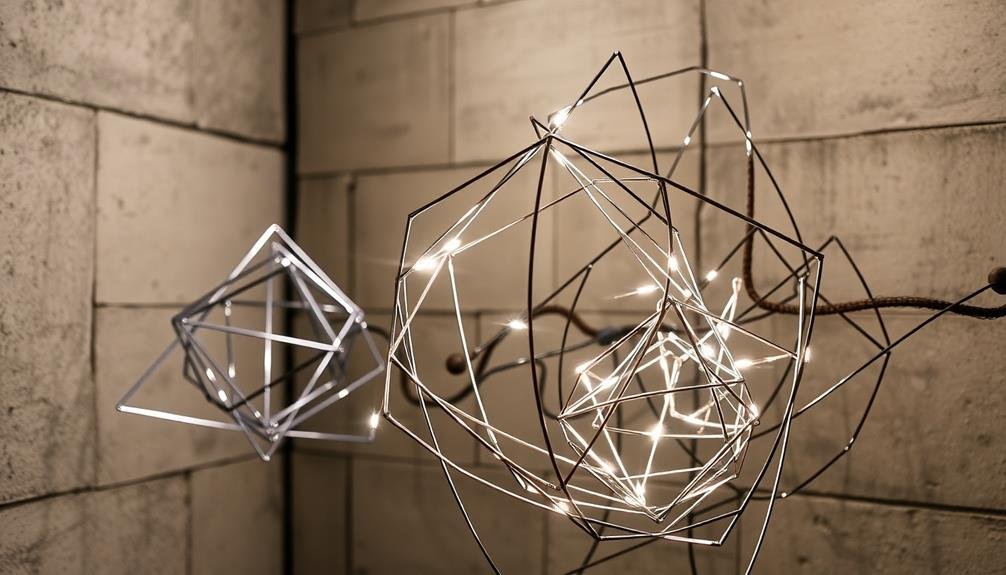
There's something enchanting about incorporating metal and wire into your 3D wall art.
These materials not only offer durability but also provide an industrial aesthetic that can transform any space into a gallery-like environment. When you choose metal or wire, your creations can range from intricate sculptures to minimalist designs, allowing for a diverse expression of creativity that resonates with others.
Consider these ideas to spark your imagination:
- Wire Sculptures: Craft delicate figures or abstract shapes that play with light and shadow, creating depth and intrigue.
- Metal Panels: Use sheets of metal to create textured backgrounds or focal points, enhancing the dimensionality of your artwork.
- Mixed Media: Combine metal and wire with other materials such as wood or fabric, resulting in a dynamic interplay that invites conversation.
Frequently Asked Questions
What Tools Are Necessary for Creating 3D Wall Art?
To create 3D wall art, you'll need basic tools like scissors, a craft knife, glue, and a ruler. Having a cutting mat and paintbrushes handy can also help you achieve those stunning details you envision.
How Do I Hang 3D Wall Art Securely?
To hang your 3D wall art securely, use sturdy picture hooks or wall anchors. Measure carefully, guarantee it's level, and consider weight distribution. You want it to feel stable and look beautiful in your space!
Can I Paint or Finish These Materials?
Absolutely, you can paint or finish these materials! Think of them as blank canvases, waiting for your creative touch. Don't hesitate to transform them; it'll make your space feel uniquely yours and truly inviting.
Are There Safety Precautions for Using Certain Materials?
When working with certain materials, you should always wear gloves and a mask to protect yourself from dust and fumes. Make certain your workspace is well-ventilated, and keep flammable items away for everyone's safety.
How Do I Incorporate Lighting Into My 3D Wall Art?
To really light up your 3D wall art, think outside the box! Incorporate LED strips or small spotlights. This'll not only enhance depth but also create a cozy atmosphere that everyone will love.
Whats Next
In summary, the world of easy 3D wall art is boundless, with materials like cardboard, foam, wood, plastic, and metal transforming mere walls into domains of creativity. Each medium offers unique advantages, allowing you to craft masterpieces that could rival the Louvre's finest exhibits, if only they had a knack for DIY. By exploring these diverse options, you can release your artistic potential and create stunning visual statements that captivate the imagination and elevate your living space.

